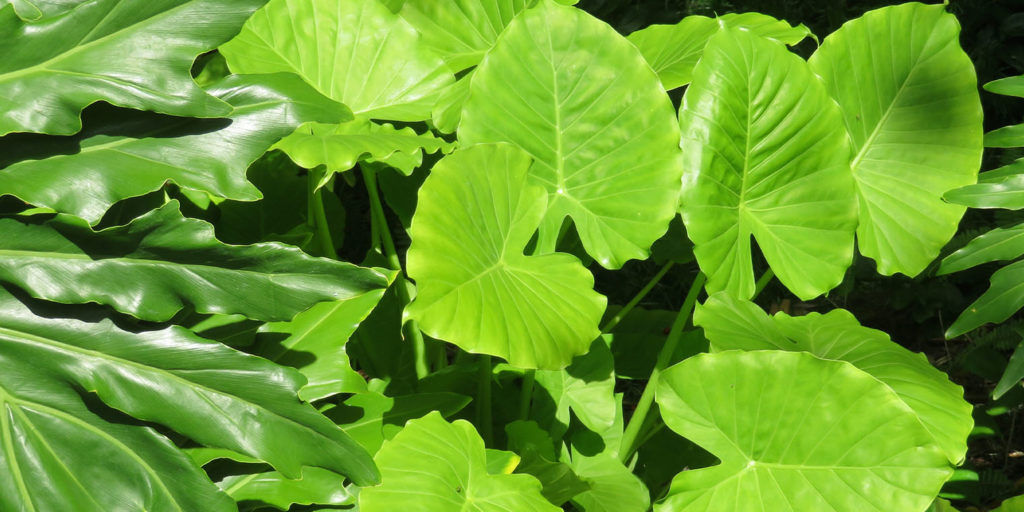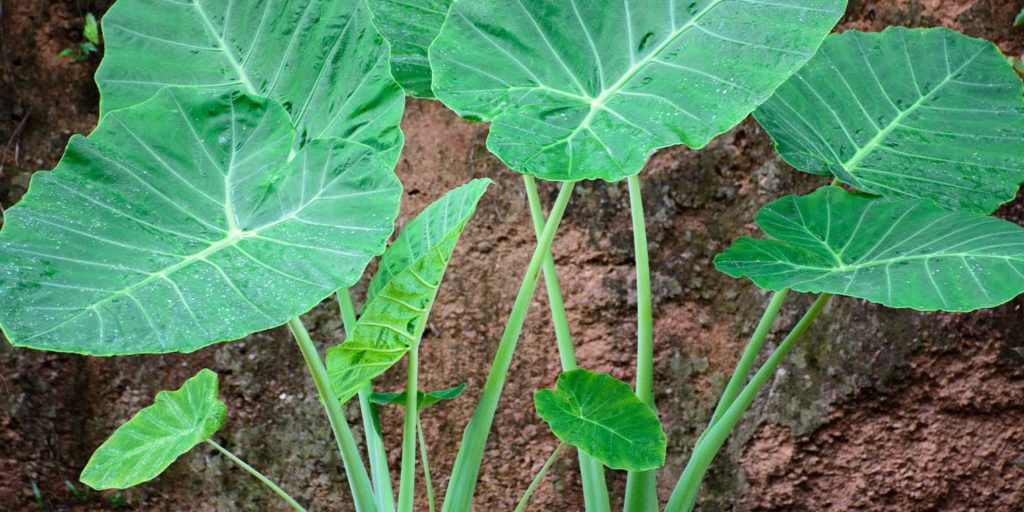Alocasia, also known as elephant’s ear, is prized for its stunning broad-leaved foliage that makes a statement in the garden. These plants are native to tropical climates, making them perfect for growing in southern Florida. Let’s cover everything you need to know about planting and caring for alocasia outdoors in Fort Lauderdale.
An Alocasia California, also known as an Elephant Ear plant, is a showstopping tropical plant known for its oversized, dramatic leaves. With huge, heart-shaped leaves unfurling in a range of greens from emerald to almost black, it’s easy to see why these beauties are so popular. But don’t let those gorgeous looks fool you – these divas need specific care, especially when it comes to soil. Read on to learn everything you need to know about choosing the perfect potting mix for your Alocasia California.
Getting to Know the Alocasia California
First things first – let’s get familiar with these tropical stunners. Native to the rainforests of Southeast Asia, Alocasia California plants thrive in warm, humid environments with filtered sunlight. Their natural habitat provides moist, rich soil and protection from harsh direct light.
As houseplants, they grow up to 5-6 feet tall and 3-4 feet wide. Outdoors in ideal conditions they can reach staggering heights of 12 feet! Their enormous leaves act like little solar panels, soaking up every bit of light and moisture they can get.
This is key to remember when selecting soil Your Alocasia is counting on you to recreate its native environment as closely as possible!
Soil Drainage: The Most Critical Factor
If your Alocasia California could talk, the first thing it would ask about is drainage! Proper drainage is absolutely crucial for these tropical beauties Their huge water-loving leaves need soil that holds moisture without getting waterlogged
Aim for a lightweight, porous potting mix that retains moisture but still allows excess water to drain freely. Poor drainage is a fast track to declining health and root rot for your diva of a plant.
Start with a basic potting soil blended with perlite or pumice to improve drainage. Or choose an aroid or orchid mix, as these are designed for plants with similar needs. Make sure the pot has drainage holes too!
Air Flow for Healthy Roots
Roots need air as much as water. While you want moisture-retentive soil, it still needs to be loose and airy enough for gas exchange to the roots.
Blend in coconut coir fibers or small orchid bark chips to prevent soil from compacting and improve air circulation. Keep an eye out for roots circling the pot, a sign of poor air flow.
Organic Matter & Nutrients
Alocasias are hungry plants. To fuel all that rapid leaf growth, the soil needs to serve up a steady diet of nutrients.
Boost nutrition by mixing in worm castings, compost, or well-aged manure. Espoma and Dr. Earth are organic fertilizers that provide slow release nutrition.
And don’t forget the soil pH! Alocasias prefer a slightly acidic soil in the 6.0 to 6.5 range. Peat moss naturally acidifies soil, so incorporate it into the potting mix.
Store Bought vs. Homemade Mix
You can certainly purchase pre-made potting mixes formulated for aroids and tropical plants. Look for bags marked for orchids or African violets, as these contain the crucial blend of peat moss and perlite.
But mixing your own custom soil gives you greater control to tweak the recipe perfectly for your plant. You can fine-tune the moisture retention, drainage, and nutrients precisely for your Alocasia’s needs.
If you want to DIY, here’s an easy recipe to try:
- 2 parts peat moss or coco coir
- 1 part perlite or bark chips
- 1 part worm castings or compost
- Pinch of lime to balance pH
Mix thoroughly and add to pot. Your Alocasia will be in soil paradise!
Potting Tips for Healthy Roots
When transplanting your Alocasia California into fresh soil, take the opportunity to examine the root system. Clip off any dead or rotten roots before replanting.
Check that the plant is not root bound. If circled tightly, gently loosen before moving to a larger pot.
Water thoroughly after repotting and keep the soil consistently moist. While they dislike wet feet, remember these are tropical plants that crave humidity. Maintain even moisture, never allowing the soil to completely dry out.
Ongoing Care for Happy Soil
Caring for your Alocasia’s soil doesn’t stop after planting! Here are some tips for keeping your soil healthy long-term:
- Check moisture frequently, watering when the top inch is dry
- Mist leaves often to boost humidity
- Top dress annually with fresh compost or worm castings
- Repot every 2-3 years into fresh soil
- Watch for pests like fungus gnats that can live in soil
- Consider beneficial nematodes to protect soil ecosystem
The soil is the foundation that supports your Alocasia’s health. By taking time to find or create the ideal potting mix, your plant will thrive for years to come! Don’t stress too much about the details – a basic aroid mix amended with bark and perlite for drainage will do the trick. Pair it with attentive care, and your Alocasia California will give you a lifetime of bold, tropical style.

Alocasia Soil Requirements
Your alocasia soil should be porous, well-aerated, well-drained, and moist! While they love good moist soil, alocasia roots will drown if the soil is heavy and waterlogged. It’s ideal to have the following ingredients in an ‘alocasia soil’ mix:
- Equal parts of houseplant soil
- Peat moss
- Perlite
These potting mix ingredients hold the perfect amount of moisture for your alocasia plant while allowing proper drainage.

Alocasia Sun Requirements
Alocasias prefer bright, indirect, or filtered sunlight because their natural habitat is under tree canopies. Despite their love of light, alocasia leaves will burn if they are exposed to direct sunlight for too long. Be sure to avoid placing your plant in areas where it will receive direct light during the peak hours of the day. The mature height of these giants and their tendency to shade out smaller plants should be considered when choosing companion plants.
Your alocasia plant will thrive in fertile, well-drained soil that receives consistent moisture throughout the growing season. As the plant matures, only water the soil when it is about 25-50% dry. You must avoid overwatering an alocasia plant because it is susceptible to root rot if it receives too much! If planting in containers, choose a container with proper drainage holes to release excess moisture as needed.

Alocasia Care Guide | Secrets to Thriving Elephant Ears
FAQ
What is the best soil for Alocasia California?
How do you care for Alocasia California indoors?
What is the best soil for Alocasia Wentii?
|
Hardiness
|
7 – 11 What’s My Zone?
|
|
Soil Type
|
Loam
|
|
Soil pH
|
Acid, Neutral
|
|
Soil Drainage
|
Moist but Well-Drained
|
|
Characteristics
|
Showy, Evergreen
|
What is the best soil mix for Alocasia plants?
A mixture of regular potting mix, perlite, and peat moss will be ideal for your alocasia. The soil must be slightly acidic with a pH of 5.5 to 6.5. Let’s find the perfect soil mix for Alocasia plants and learn how to create the best growing environment for them!
How do you care for Alocasia?
These will make the soil loose and improve air circulation. Alocasia prefers slightly acidic soil with a pH of 5.5 to 6.5. When getting the soil for your Alocasia, ensure the pH level is ideal for the plant. Various issues will develop if the pH doesn’t match the plant’s preference. You will notice stunted growth and foliage problems.
Can Alocasia California grow indoors?
Through focusing on the appropriate mix of lighting, watering, temperature along with humidity, anyone can help your Alocasia California flourish indoors. These plants are an optimal choice for growing indoors. With the best mix of lighting, watering, temperature along with humidity, anyone can allow your Alocasia California thrive.
Do Alocasia plants need to be watered?
A: Alocasia plants prefer moist soil, so it’s important to keep the soil consistently moist but not waterlogged. Water your plant when the top inch of soil feels dry. Q3: Can I fertilize my Alocasia plant?
